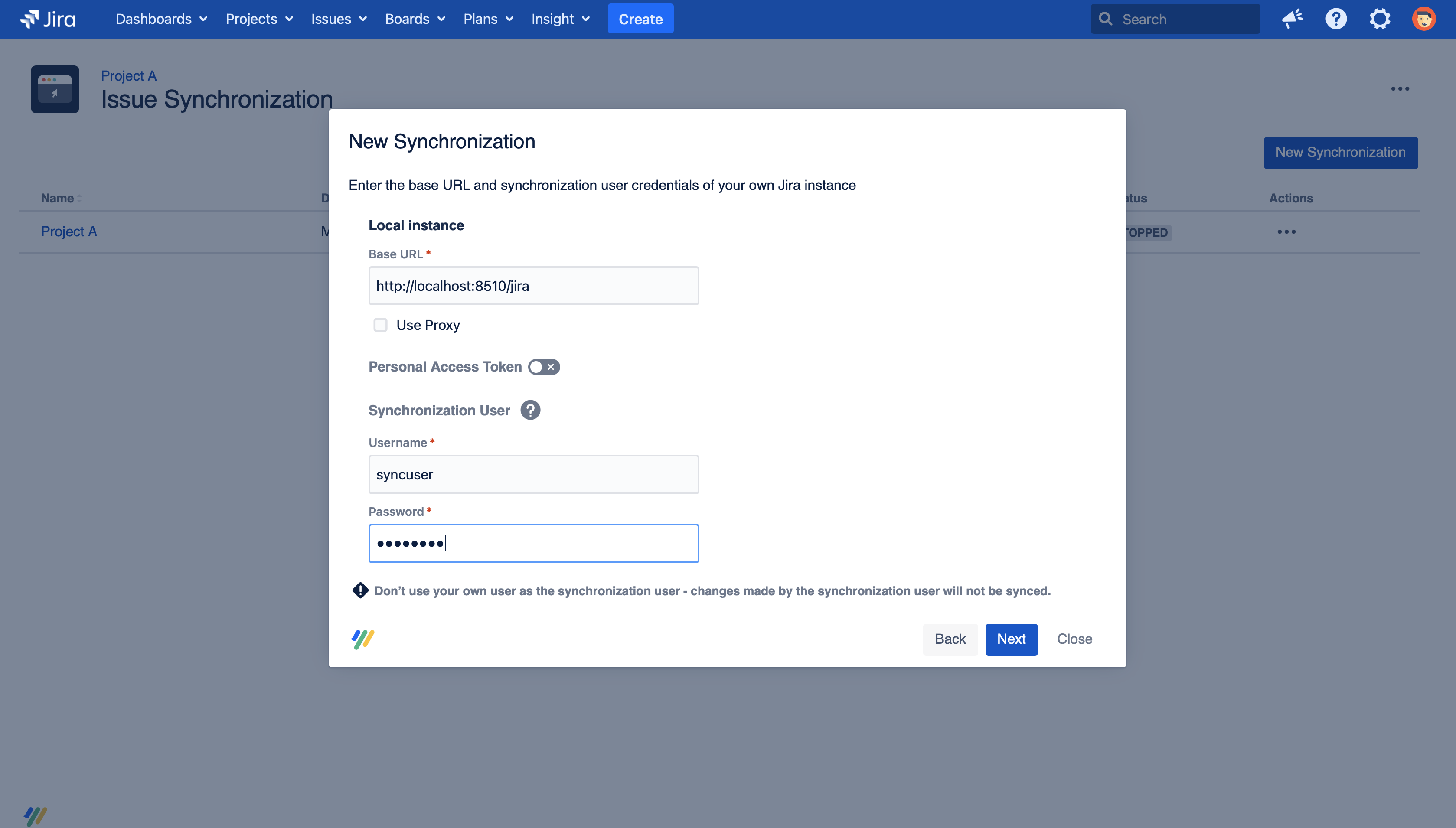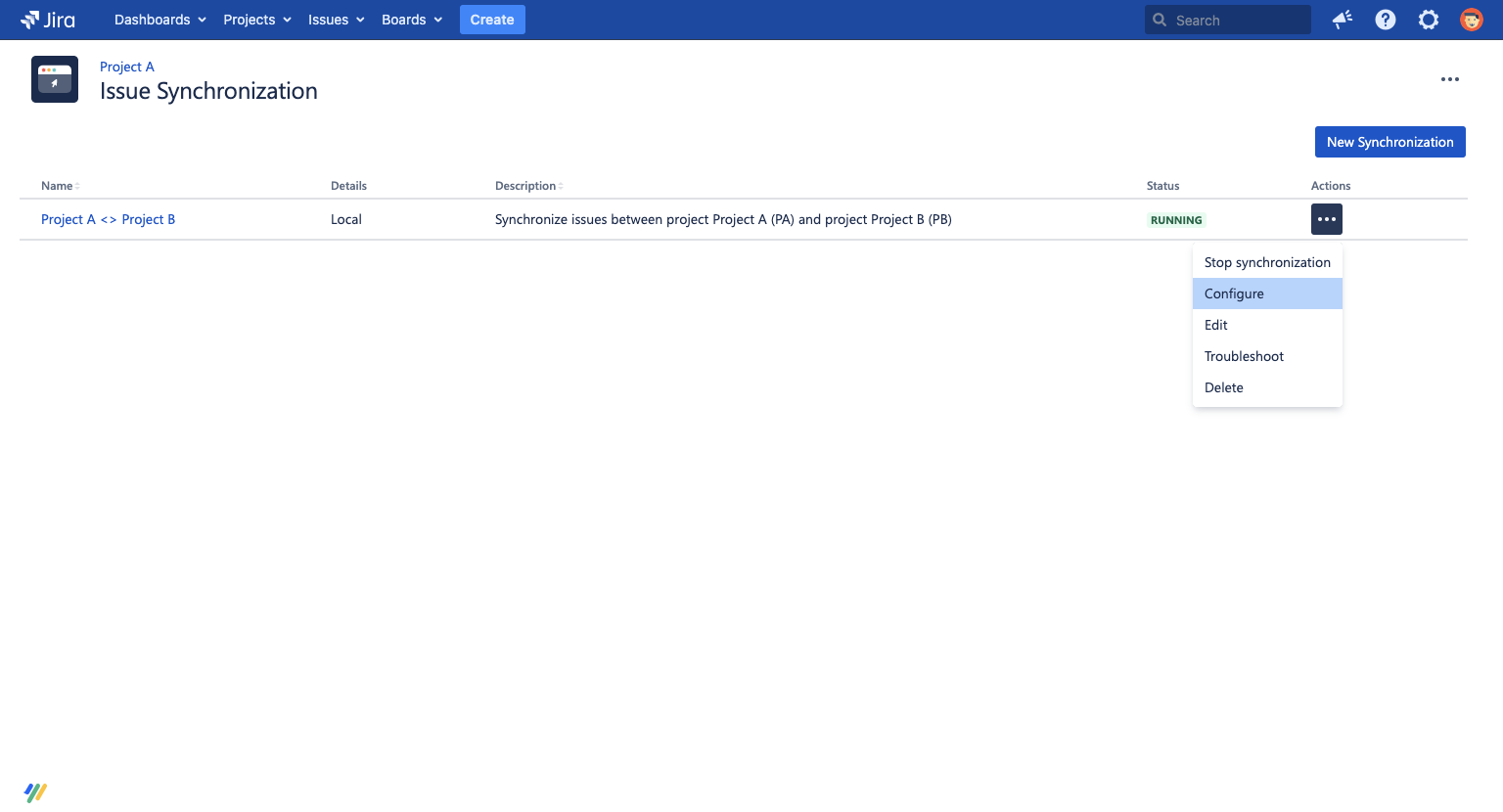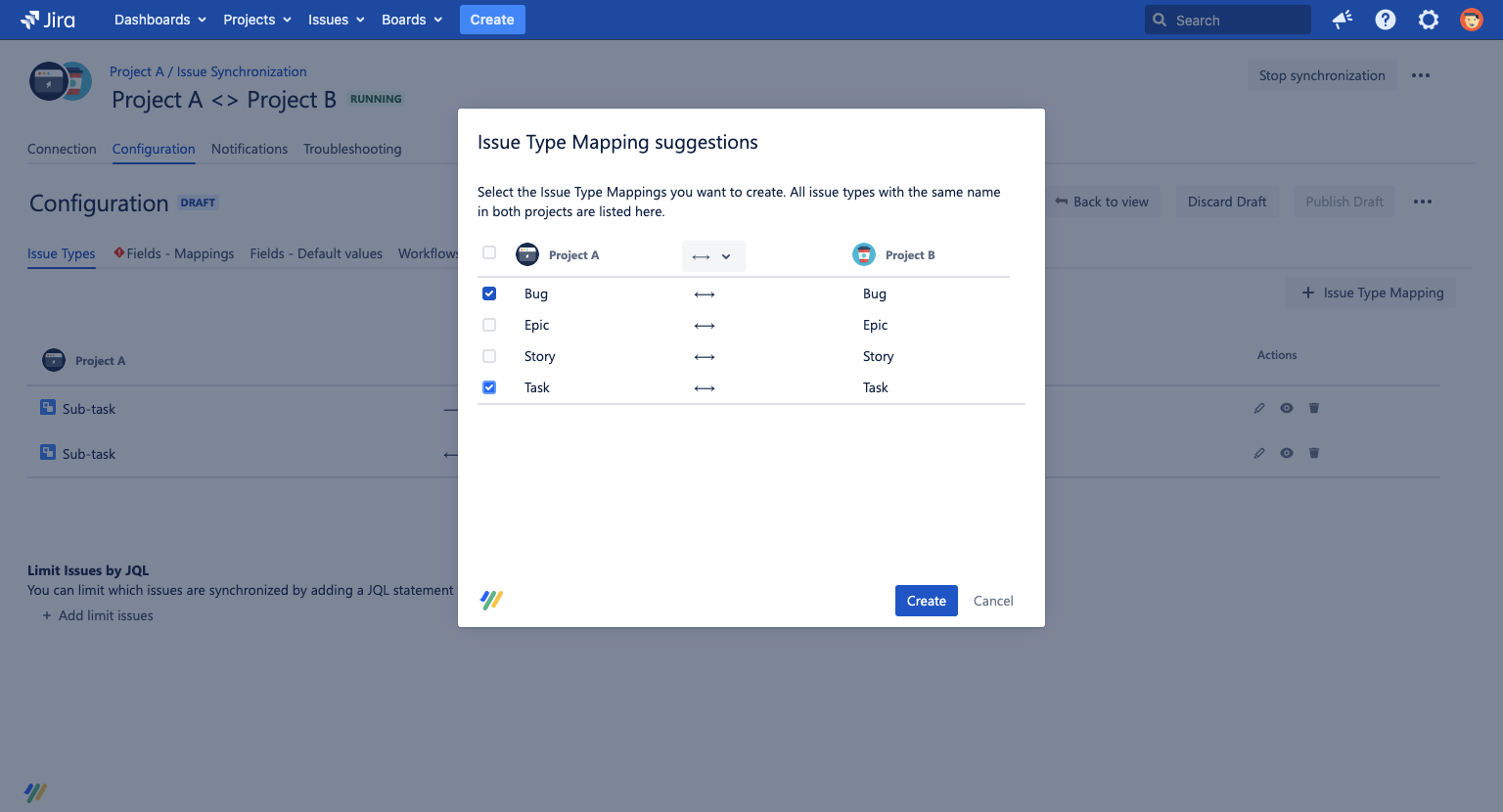Get started
Thanks for choosing Backbone Issue Sync to synchronize your JIRA projects, letting you collaborate across departmental and B2B borders.
In a few simple steps, this guide will show you how to synchronize two JIRA projects, so that if you make changes to an issue (or create an issue) in one project, the same is done automatically in the other project.
Watch the video
You can also watch our get started video explaining features on a high level view as well as showing the exact setup steps.
1: First steps
Firstly, we'll set up two example JIRA projects which we'll synchronize in this guide, and create the JIRA user that Backbone uses to make changes (referred to in Backbone as the Synchronization User).
- Set up two new JIRA projects called Project A and Project B.
- Create a new JIRA user called syncuser.
- Now, for Project A and Project B, grant syncuser the Browse Projects, Create Issues, and Edit Issues JIRA permissions. For a more fine-grained permission setup, please take a look at this article.
2: Establish a connection between the projects
Let's establish a connection between the two projects, so that they can communicate with each other.
- To start creating the synchronization, open Project A, then select Project settings > Issue Synchronization > New Synchronization. To keep things simple, select Local (with this you set up a synchronization between two projects on the same instance).
- Now, you can start configuring the synchronization:

In Base URL, enter the Base URL of your JIRA instance
- Optionally configure a forward proxy.
- Optionally activate using a personal access token
- In Synchronization User:
- enter the synchronization user's username (in this example, that's syncuser)
- enter the synchronization user's password/personal access token
- Next, you can assign the synchronization a name and description. When you make multiple synchronizations for a project, it's important to name them descriptively, so you don't get them confused. However, for now, let's stick with the default.
Congratulations, you've established the connection between Project A and Project B! Now, let's configure what data will be synchronized between the projects.
3: Configure synchronization settings
In this step, we'll configure the synchronization, telling Backbone what data it should synchronize between the projects.
- Click ... > Configure to go to the configuration UI:

- Click the Edit Configuration button to start configuring.
- On the Issue Types tab, click Start with simple mappings and select an issue type to synchronize in both directions between Project A and Project B:

- Now, map which fields should be synchronized at Fields - Mappings > Start with simple mappings.
- Check Summary and Description, and click Create.
- Click Publish Draft to save the configuration, then click Start to start the synchronization.
Well done – you've configured your first synchronization with Backbone Issue Sync! Now, all new issues with type Task will be synchronized between Projects A and B, and the Summary and Description fields will be synchronized between those projects, too.
4: Use the synchronization
Now for the fun part: let's use the synchronization by creating an issue in Project A, and watching as it is automatically synchronized to Project B.
- Create a new issue with type Task in Project A, and enter some content in the Summary and Description fields.
- Now, open Project B – you'll see that the issue has now been synchronized.
- Open the synchronized issue Project B, and edit the summary and description.
- Go back to the issue in Project A, and the edits have now been synchronized back over.
That's all there is to it – you have successfully created and tested your first synchronization.
Next steps
Now, you can try out more configuration options, such as adding more issue types, field mappings, or comments and attachments.
